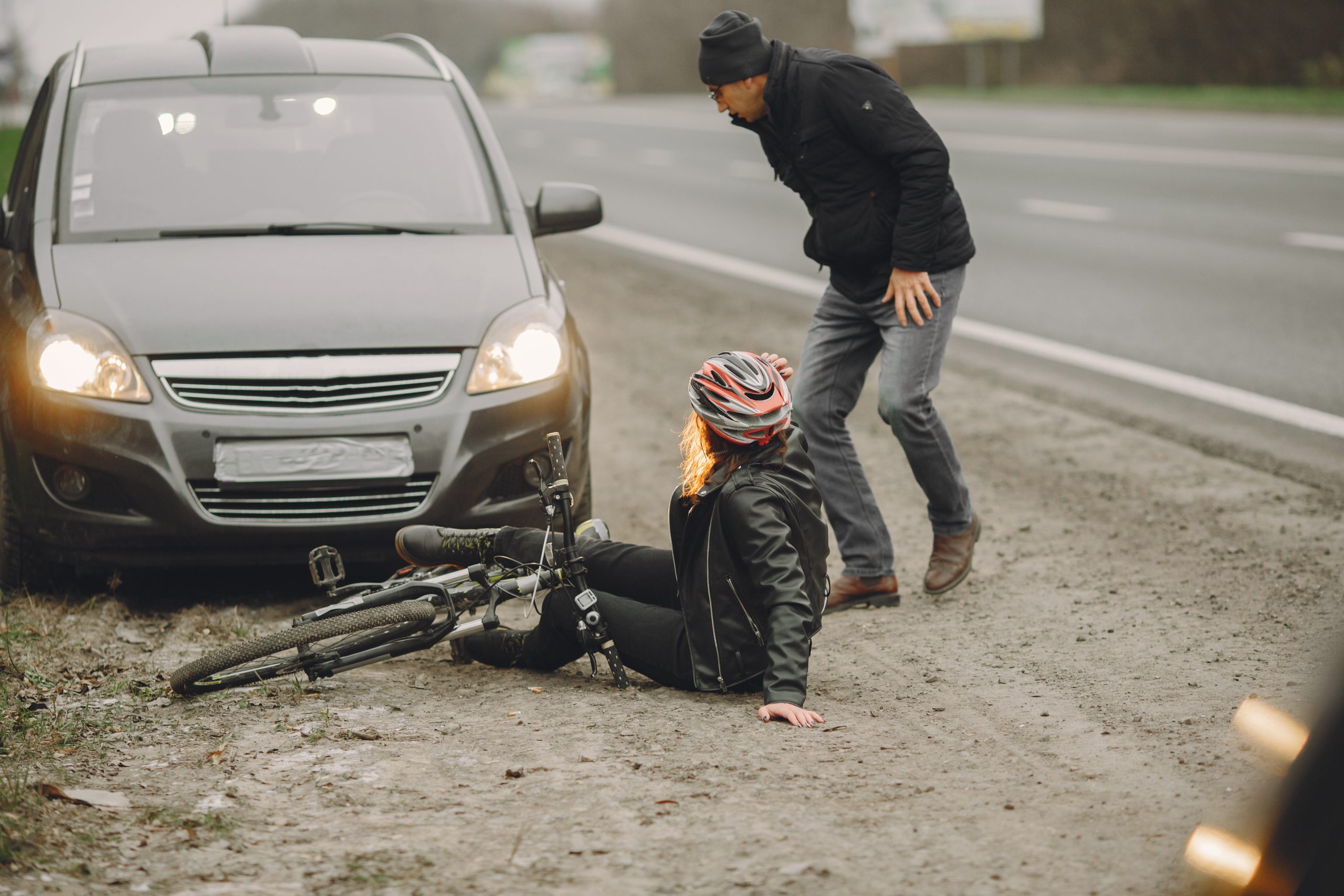- Resources
- The Use of Drones in Accident Reconstruction: Aerial Perspectives in Court
The Use of Drones in Accident Reconstruction: Aerial Perspectives in Court
December 12, 2023
Accidents happen, and when they do, piecing together the events leading up to the incident is crucial for understanding liability and ensuring justice. Mishap rebuilding is a careful process that usually involves the gathering of tangible proof, observer statements, and professional analysis.
Nevertheless, in recent years, the fusion of technology has transformed this domain, with drones emerging as a game-changer. The utilization of drones in mishap rebuilding offers a distinct aerial viewpoint that not only improves the precision of investigations but also assumes a crucial role in presenting proof in court.
The Traditional Challenges of Accident Reconstruction:
Before exploring the benefits of utilizing drones, it is crucial to acknowledge the difficulties inherent in conventional accident reconstruction techniques. When a mishap transpires, examiners must depend on tangible proof, like tire imprints, sliding patterns, and harm to automobiles, to assemble the sequence of occurrences. This procedure is lengthy, susceptible to human miscalculations, and might not consistently offer a comprehensive comprehension of the accident dynamics.
Witness statements, while valuable, are often subjective and can be influenced by factors like stress, trauma, or even personal biases. As a result, accident reconstruction experts have sought innovative solutions to augment traditional methods and improve the accuracy and reliability of their findings.
The Rise of Drones in Accident Reconstruction:
Drones, or Unpiloted Aerial Vehicles (UAVs), have emerged as a potent tool in collision reconstruction. These tiny, nimble aircraft furnished with high-definition cameras and sensors can seize intricate pictures and information from perspectives that were formerly unreachable or excessively hazardous for examiners.
The ability to survey accident scenes from the air provides a comprehensive view that complements traditional methods, offering a more holistic understanding of the events leading to an accident.
Advantages of Using Drones:
- Aerial Perspective: Drones offer a unique vantage point that allows investigators to see the entire accident scene from above. This aerial perspective enables the reconstruction of the spatial relationships between vehicles, road conditions, and other relevant elements. By providing a comprehensive view, drones help recreate the accident in 3D, offering a more accurate representation of the events.
- Data Accuracy and Precision: The information gathered by drones, including high-definition pictures, clips, and three-dimensional mapping, greatly improves the precision of accident reconstruction. Drones can record small particulars such as tire tracks, scattered objects, and the exact position of automobiles, granting investigators a plethora of data to scrutinize. This degree of intricacy is vital in determining variables like car velocity, collision point, and the chronological order of events preceding the accident.
- Efficiency and Time-Saving: Traditional accident reconstruction methods can be time-consuming, especially when investigators need to close down roads for extended periods. Drones expedite the process by swiftly surveying large areas and collecting data efficiently. This not only reduces the time required for investigations but also minimizes disruptions to traffic and the surrounding community.
- Enhanced Safety for Investigators: Accident scenes can be hazardous for investigators, particularly in situations involving severe damage or hazardous materials. Drones eliminate the need for investigators to physically access precarious locations, improving overall safety. This is particularly valuable in situations where access to certain areas may pose risks to human investigators, such as steep embankments or areas with structural damage.
- Dynamic Scene Reconstruction: Drones furnished with live video streaming capabilities enable investigators to oversee and document fluctuating aspects of the mishap location. This encompasses the motion of automobiles, alterations in meteorological circumstances, and the conduct of pedestrians or additional factors that might have played a role in the mishap. The capability to reconstruct the location instantly heightens the overall precision of the inquiry.
- The Role of Drones in Presenting Evidence in Court: The integration of drone technology in accident reconstruction not only facilitates thorough investigations but also plays a crucial role in presenting evidence in court. Visual representations of the accident scene captured by drones provide judges and juries with a clearer understanding of the events, making complex technical information more accessible and compelling.
- Visual Impact: The adage "a picture is worth a thousand words" holds true in accident reconstruction cases. Drones capture high-quality images and videos that can be presented in court to vividly illustrate the sequence of events. Visual evidence is often more compelling and easier for individuals without technical expertise to comprehend, making it a powerful tool in the courtroom.
- Virtual Reconstruction: Drones enable the creation of virtual reconstructions of accident scenes, allowing legal professionals to navigate and explore the incident virtually. This interactive approach provides a dynamic way to present evidence, allowing judges and juries to explore different angles and perspectives. Virtual reconstructions enhance the persuasiveness of the evidence and engage the audience in a manner that traditional methods cannot achieve.
- Expert Testimony Support: Accident reconstruction experts can leverage the data collected by drones to support their testimony in court. The visual and analytical information obtained from drone surveys enhances the credibility of expert opinions, reinforcing the accuracy and reliability of the reconstruction process. This can be instrumental in establishing the expert's authority and persuading the court of the validity of their findings.
- Legal Strategy Enhancement: Legal teams can use drone-generated data strategically during court proceedings. By incorporating visual evidence into their arguments, attorneys can strengthen their case and effectively communicate complex technical details to the judge and jury. This can be particularly advantageous in cases where the opposing party disputes the findings of the accident reconstruction.
- Challenges and Considerations: While the use of drones in accident reconstruction brings numerous benefits, it is essential to acknowledge and address potential challenges and ethical considerations. Privacy concerns, airspace regulations, and the need for well-trained operators are among the key factors that demand careful attention. Additionally, the admissibility of drone-generated evidence in court may be subject to legal scrutiny, emphasizing the importance of adhering to established guidelines and standards.
Conclusion:
The integration of drones in accident reconstruction represents a paradigm shift in the way investigators approach and present evidence in court. By providing a comprehensive aerial perspective, enhancing data accuracy, and expediting the investigation process, drones have become invaluable tools in the pursuit of justice.
As advancement continues to progress, the utilization of unmanned aircraft in accident reenactment is apt to develop further, presenting even more advanced capabilities to enhance the precision and effectiveness of examinations.
As lawful experts, accident reenactment specialists, and the overall population become progressively acquainted with the advantages of unmanned aircraft technology, we can anticipate witnessing its ongoing incorporation as a customary practice in accident investigations and courtroom procedures.
The Allied Outsourcing has firmly positioned itself as a top supplier of dependable legal services, providing a broad spectrum of solutions to fulfill the varied requirements of its clients. With a dedication to superiority and a group of proficient legal experts, Allied Outsourcing has become synonymous with confidence and effectiveness in the legal outsourcing field.
One of the key strengths of Allied Outsourcing lies in its ability to deliver precise and accurate legal services across various domains. From lawful exploration and record audit to agreement composing and conformity management, the organization's proficient group navigates the complexities of the lawful landscape with skill.
Customers benefit from an efficient and cost-effective approach to lawful assistance, guaranteeing that their lawful prerequisites are met with the utmost care and skill. With a customer-centric focus, Allied Outsourcing continues to be a dependable partner for enterprises and lawful professionals seeking first-rate lawful services customized to their particular requirements.
To know more, reach out to: https://thealliedoutsourcing.comcontact/
All Categories
- Case Law (86)
- Case Studies (6)
- Demand Letter (14)
- Deposition Summaries (11)
- Legal Research (71)
- Marketing (1)
- Medical Summaries (14)
- Others (4)
- Personal Injury (51)
- Virtual Assistant (56)
Related Blogs



